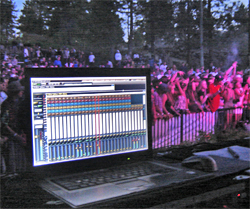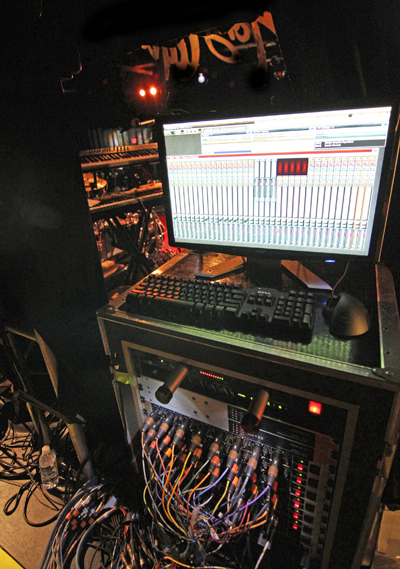
Getting Air
Based in the beautiful mountains of Lake Tahoe, where “getting air” is a common event during snow season, the principals of AIR Consoles (a.k.a., Audio Integrated Research) have an intense vision of their own: changing the world of large-format mixing desks as we currently know them.
Their version of getting air has to do with the mobility of the control surface, not just jumping off mountain tops… which they also excel at.
AIR Console’s president Damon Gold, and vice president Glen Campbell (no relation to the singer), share a mission – along with a handful of other VARs and integrators – to supply the hardware, education, and services that give SAC the fuel that gets the job done.
An AIR console consists of a one or more banks of microphone pre-amps (usually 8 channels per bank that normally include output channels), plus one or more PC tablets for remote control. Options include a touch screen controller (up to a 32-inch screen with 50 touch points), and all other supporting hardware that brings the whole system together.
An AIR console can be as small as 8 x 8, or as large as 72 x 72 – and 128 x 128 will soon be available for mega-events.
Presently, various commercial preamps can be utilized – and often are – but the company is headed in the direction of developing its own optimized I/O product that will talk directly to the assembly language code that SAC is based upon, thereby providing what might be accurately called a “super-interface.”
The range and depth of possibilities that an AIR Consoles package brings to the table is considerable. Much like the introduction of the early digital consoles – long after the world became comfortable with analog desks – an AIR console is best utilized when the engineer fully embraces the new approach that AIR is capable of bringing to the workflow – rather than trying to merely emulate a physical console of the past.
Nearly Opposite
A good example of this new workflow is the way that multiple monitor mixes are handled. While traditional methodology demands a large number of Aux sends to provide a large number of individual mixes, an AIR console takes a nearly opposite approach.
At first blush, AIR’s six stereo Aux sends would seem to fall far short of the number needed to accommodate today’s big productions. But delve a little deeper, and you’ll quickly find that there are 24 additional virtual consoles, each with their own six stereo Aux sends (yes, that’s 24 virtual consoles).
So instead of tweaking Aux sends all night long to keep the performers happy, each monitor mix has its own virtual console. The Auxes can now be utilized as effects sends, instead of the backbone of the various monitor mixes.

